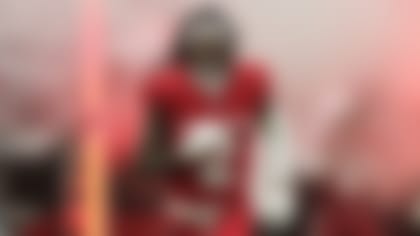*Editor's note: This piece was written in 2011 following the Green Bay Packers' Super Bowl XLV win over the Pittsburgh Steelers, ranking the greatest Packers teams in franchise history. Included is Vince Lombardi's 1966 outfit, which will be prominently featured in "Super Bowl I: The Lost Game", which airs on NFL Network at 8 p.m. ET on Friday. *
Lambeau Field sold out in a matter of hours on Tuesday -- not for a game -- but for what amounted to a pep rally celebrating the Super Bowl champion Packers. Considering the entire town's population is only 101,000, that means roughly half the town was there.
The 2010 Packers should be celebrated, and despite their status as a sixth-seed-turned-Super Bowl-champion, they belong among the franchise's elite teams. But are they among the best all-time?
Any time you dwindle 90 years of football to only five memorable teams, there will be some debatable cuts. The 1967 Packers, despite winning Super Bowl II, is one of them. Ditto several other championship teams. The 1982 Green Bay squad was difficult to ignore, not because they made the playoffs, but rather because quarterback Lynn Dickey had maybe the best white-guy-afro ever seen in the NFL.
The toughest cut is from way back ... pre World War II, pre Depression era, pre David Lee Roth. The 1929 Packers gave up 20 points -- all season! Led by legendary head coach Curly Lambeau, they went 12-0-1 and won the title. Yet, in those days, teams didn't have to play in a championship game to win the title, so this group didn't pass the test.
Number five on the list of the greatest Packers teams ever had to win the title the hard way.
5. 2010 Packers, Super Bowl XLV champs
Sure, maybe these guys eeked into the playoffs. But Mike McCarthy's squad overcame more than a dozen players being put on injured reserve. Aaron Rodgers and Green Bay's talented receiving corps exploded in the playoffs.
Despite that offensive success, Rodgers put it best after the Packers won the NFC Championship when he said, "sometimes the offense gets too much credit around here."
While Rodgers will be the poster child for the 2010 Packers, what clinched them a spot on this list was the difficult path this team traversed to get the title and the caliber of the defense.
4. The first Super Bowl champs
The 1966 Packers were also known largely for their offense, and the power sweep made famous by Vince Lombardi telling NFL Films, "We need a seal here ... and a seal here ..."
By '66, Hall-of-Fame running backs Jim Taylor and Paul Hornung were aging, with the latter putting up more numbers in nightclubs than on the field. Ultimately, like the 2010 Packers, it was the defense that carried Bart Starr and the rest of the offense to Super Bowl I, giving up only 163 points in 14 games (fewest in the league.) Five starters on that 1966 defense ultimately landed in the Hall of Fame: Ray Nitschke (LB), Herb Adderley (CB), Wille Davis (DE), Henry Jordan (DT), and Willie Wood (S).
In the few instances when the defense faltered, like the NFL Championship Game in Dallas, the offense got 'er done. Starr was a master at converting third-and-1 into a big play, and was one of the most accurate downfield passers of all-time. Against the Cowboys, he went 19 of 28 for 304 yards, with four touchdowns and no picks. (Rodgers' numbers in the Super Bowl: 24-39, 304 yards, three touchdowns and no picks. Eerie.)
The next team on our list barely threw the ball at all, but when they did, it usually landed in the hands of arguably the best wide receiver in NFL history.
3. The first real championship team
Jerry Rice didn't play in 1936, but Don Hutson was just getting started. Next to Slingin' Sammy Baugh, Hutson was probably the greatest player of the NFL's first 50 years. When he retired in 1945 with 488 receptions, no one else even had 300! He caught a touchdown every 5.3 passes -- a much better ratio than Rice (7.9) -- in an era where passing the ball was harder than the elevator level in Donkey Kong.
With a queen on the chessboard like Hutson, who was in his second year, every team in the NFL had to adjust -- especially considering quarterback Arnie Heber is also in the Hall of Fame. Games in those days were played close to the vest, where coaches often ran the ball 70 percent of the time and grinded out 13-10 wins. Problem was, the 1936 Packers allowed just 10 points per game and if an opponent built a small lead, it wasn't safe with Hutson running around.
Much like McCarthy's team this year dealt with adversity, the 1936 Packers did as well, stumbling early in a 30-3 loss to the archrival Bears in Week 2. In a 12-game season, with no playoff system, that one loss could've been devastating -- much like college football. But these Packers got ticked off after the Bears debacle, winning nine in a row by a combined score of 235-81.
In the championship game vs. the Redskins, Hutson scored on a 48-yard bomb from Herber just minutes into the contest -- which wasn't a contest at all, as Green Bay rolled, 21-6.
2. God's team
The 1996 Packers also dealt with adversity, and had not one, but two queens on the chessboard. Brett Favre's addiction to painkillers was at the top of the news in the offseason. Yet, the 27 year old overcame a very public issue en route to earning his second straight MVP trophy. The Packers' riches didn't stop with their quarterback.
Reggie White was as good as any player in the NFL in 1996, and Favre would probably be the first to tell you that. Perhaps the best free-agent acquisition in NFL history, the "Minister of Defense" allowed defensive coordinator Fritz Shurmur to take some risks. His dominant play -- from inside or outside -- wasn't as notable as his saying that "God told me to play in Green Bay."
While White's signing was a real boon for the Pack, as were the acquisitions of defensive end Sean Jones, tight end Keith Jackson, and return man Desmond Howard, the real strength of this 13-3 team was its coaching staff. Mike Holmgren called the shots, and future playoff head coaches Andy Reid, Steve Mariucci, and Jon Gruden were all in the building either during the that season (Reid) or seasons prior (Mariucci and Gruden). Those guys were key to Green Bay winning Super Bowl XXXI.
The '96 team also merits such a high ranking because it made it back to the Super Bowl in '97 in the midst of the salary-cap era.
1. Titletown, USA
While the phrase "Titletown, USA" might have come in vogue in the latter part of the '60s, there can be no doubt that "Lombardi's Packers" truly arrived in 1962.
Talk about a team that was beyond ridiculous. The 1962 Packers won their first 10 games, finished 13-1, and led all teams in scoring offense and defense. The average score of their victories was 31-9! When they finally lost on Thanksgiving Day in Detroit, they responded by hanging a 41-spot on the Los Angeles Rams the next week.
This was Lombardi's Packers at their finest, with the core -- Starr, Hornung, Taylor, Jerry Kramer, Nitschke, and Adderley -- all in their 20s. This brat(wurst) pack would be together for five NFL titles, with '62 being their most dominant offering. No other Packers team is even close. Is any team in history close?
Follow Elliot Harrison on Twitter @harrisonNFL.





